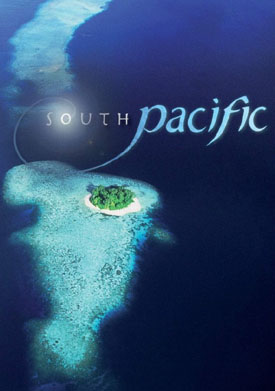 South Pacific is another of the BBC’s “nature” series that I’ve been watching recently — “nature” in quotes because, while it does deal with the wildlife on the islands of the Pacific, it also focuses on the people and their adapations to island life.
South Pacific is another of the BBC’s “nature” series that I’ve been watching recently — “nature” in quotes because, while it does deal with the wildlife on the islands of the Pacific, it also focuses on the people and their adapations to island life.
The series runs six episodes, each approximately one hour, and is narrated by Benedict Cumberbatch, who is a remarkably effective narrator. The first episode is really an overview, touching on some of the adaptations that wildlife has made to island life, such as the robber crabs — also known as “cononut thieves” — that are the largest land invertebrates in the world, and feed on — you guessed it — coconuts. And then there are the carnivorous caterpillars. . . . The second, titled “Castaways,” looks at the ways some of the animals have colonized the islands — which, when one considers the distances involved, in itself is remarkable. It also looks at the migrations of the Polynesians, who radiated from New Guinea eastward all the way to Hawai’i (which has the distinction of being one of the most remote archipelagos in the Pacific, which seems strange to an American, but there you have it). Notable is their invention of the outrigger canoe with sails, which made their epic voyages possible. “Endless Blue,” which follows, is built around the story of the wreck of the Essex, which inspired Melville’s Moby Dick. (Yes, the Essex was rammed by a huge sperm whale and sank.) It also describes the travails of the ocean wildlife — sharks, whales, turtles — in what is, for lack of a better word, a watery desert known as “The Desolate Region.” “Ocean of Volcanoes” looks at the formation of the Pacific islands, from underwater volcanoes that create what are really the world’s tallest mountains that then cause the earth under them to sink from their sheer weight, finally disappearing again beneath the waves an leaving behind coral atolls. Episode 5, “Strange Islands,” examines the ways in which adaptation to island life sometimes works against birds and animals when new species are introduced, such as the story of the lighthouse keeper whose cat brought him an example of a wren that turned out to be a new species; sadly, by the time it was identified, it was extinct — thanks to the cat. “Fragile Paradise” looks at the threats to the islands and their people — largely from commercial fishing operations — and what it being done to preserve their precarious balance.
If I had to choose one word to describe the series, it would be “travelogue.” While it does focus on the natural life of the islands as well as the customs of the human inhabitants, it’s more than a little episodic: I would be much happier with a stronger narrative line to tie the episodes together. For example, it’s not until the fourth episode that we learn how the islands were formed (and are still being formed — Kilauea in Hawai’i has been in almost continuous eruption for about twenty-five years and has added a couple of square miles of new land to the island of Hawai’i itself). Likewise, the means by which plants and animals colonized the islands is largely presented piecemeal, with a more substantial examination in episode two. I might also point out that the BBC displays a fascination with sequences of breaking waves shot from below. Interesting, but it’s an image that should be used sparingly.
Objections aside, it is enjoyable viewing, but don’t expect a clear presentation of the information. The entry at Wikipedia has detailed descriptions of the various episodes and production credits.
The series is available on DVD and as of this writing (March, 2018) is available for streaming on Netflix.
(BBC, Discovery Channel, 2009)
